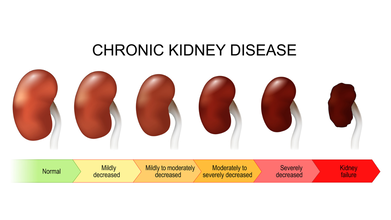- Health Conditions A-Z
- Health & Wellness
- Nutrition
- Fitness
- Health News
- Ayurveda
- Videos
- Medicine A-Z
- Parenting
Bird Flu In US: Are Cats Spreading A Deadly Disease?

Credits: Canva
Zoonotic diseases can spread from animals, including the ones we consume or keep as pets, including cats. Why are we talking about cats today? It is because of the increasing numbers of bird flu in the United States, cats of all shapes and sizes have come down with bird flu.
Bird flu was seen in poultry, where chickens have been affected, and even cows too. Why is it a concern for cats? This is because barn cats drink raw milk. In recent days, 20 wild cats at a Washington State animal sanctuary that ate infected birds and other reports of indoor cats dying from eating contaminated food have come out.
Why do cats get bird flu?
One of the leading causes is that unlike dogs, cats hunt for smaller prey, which includes birds and mice, carriers of bird flu. Dr Michael Bailey, the president-elect of the American Veterinary Medical Association (AVMA), in a guidance released for cat owners noted that by their very nature, cats have more "opportunity" to ger infected with bird flu.
“We don't know if the cats are more susceptible than anybody else,” he said. “It's just the fact they're exposed to higher viral burdens because of where they go.”
Reports say that domestic cats have been bird flu virus carrier since 2004. Kristen Coleman, an assistant professor at the University of Maryland School of Public Health told a media outlet that before, about half of cats died, and now with the spreading of the bird flu even in cows, about 90% of them seem to be dying. Coleman has also been tracking the deaths. She has also shared 4 main tips to protect pets from bird flu which includes:
- Do not touch or allow pets to touch sick or dead animals or animal dropping
- Do not consume, or feed your pet, raw meat or milk
- Keep a close watch on free-roaming outdoor pets
- Immediately report rabies-like symptoms to a veterinarian
Are there symptoms of bird flu in cats one should look out for?
As per AVMA, pet owners must look out for signs like:
- Loss of appetite
- Lethargy
- Fever
Bird flu infection can also progress with neurologic signs, which includes:
- Tremors
- Seizures
- Not being coordinated
- Blindness
Cats may also suffer from:
- Severe depression
- Discharge from their eyes or nose
- Respiratory symptoms which includes rapid breathing, shortness of breath, and sneezing or coughing
Are humans at threat?
Sick animals may also be able to transmit influenza virus to humans through their saliva, excretion and other bodily fluids. People can also get infected by breathing in the virus or by touching something that has virus on it and then touching their eyes, mouth, or nose.
If you think your cat might have bird flu—or any other infectious disease—try to limit their contact with other pets and people in your household, especially those with weakened immune systems, until you get advice from a veterinarian, as recommended by the AVMA. While the chances of cats transmitting H5N1 to humans are extremely low, they aren’t zero.
According to CDC guidance, keep an eye on yourself and your family for flu-like symptoms and reach out to a healthcare provider if needed. Be sure to wash your hands thoroughly after handling your cat or cleaning their litter box and bedding.
The Time Of Christmas Carol Is Here; The Best Part? Singing Is Good For Your Health, Say Studies

Credits: iStock
As December rolls in, familiar melodies float through malls, train stations and sometimes right outside your front door. Carol groups wrapped in tinsel bring a warm sense of nostalgia. Their voices rise in unison, cheerful and bright, filling cold evenings with a comfort that feels almost instinctive. What most people do not realize is that this seasonal tradition may be giving the singers themselves a genuine health lift.
Researchers have been exploring this for years, and their findings suggest that singing is far more than a joyful holiday hobby. It strengthens social bonds, supports emotional wellbeing and even offers physical benefits that reach deep into the brain and lungs.
Why Singing Feels So Good
Alex Street, a researcher at the Cambridge Institute for Music Therapy Research, describes singing as a cognitive, physical, emotional and social act, as reported by BBC. When people sing, especially in groups, the brain lights up in ways few other activities can replicate. Regions responsible for language, movement and emotion get activated at the same time. The steady breathing that singing requires also prompts the release of endorphins, which brings on feelings of pleasure and reduces pain.
Psychologists have long noted how even strangers can develop a sense of togetherness after singing side by side for just an hour. This may explain why community choirs often feel like extended families.
A Simple Workout with Surprising Benefits
Beyond the emotional high, singing demands more from the body than many expect. Studies have shown that it can improve heart rate, circulation and blood pressure. The controlled breathing and longer exhalations strengthen the lungs in ways similar to moderate physical activity. Some researchers even compare a singing session with a brisk walk.
BBC reports that Adam Lewis, an associate professor of respiratory physiotherapy at the University of Southampton, notes that singing encourages people to use their respiratory muscles more efficiently. This is one reason why it has become a useful complementary tool for people living with chronic lung conditions.
Healing Through Harmony
One of the most profound uses of singing is in therapy for people recovering from brain injuries or neurological illnesses. Music therapists often rely on songs from childhood to help patients regain speech or movement. The story of former US congresswoman Gabrielle Giffords is one of the most well known examples, reports BBC. After surviving a severe brain injury, she regained her speech partly through singing familiar melodies during therapy sessions.
Similar approaches have been used with stroke survivors, patients with Parkinson’s disease and people living with dementia. Singing provides repeated vocal practice, encourages focus, and stimulates both sides of the brain. Experts also believe that it may help slow cognitive decline in older adults, although long term studies are still needed.
A Gentle Way Back to Community
For many people living with chronic illness, joining a choir brings something even more meaningful than physical gains. It offers a space where patients, caregivers and professionals participate as equals. Street describes these shared moments as a rare kind of unity that dissolves labels and replaces them with a sense of belonging.
As researchers learn more about the power of song, the message becomes clearer. Singing is not just entertainment. It is a tool for connection, a low cost therapy and a way to strengthen both mind and body. So this festive season, joining a group around the Christmas tree might be more beneficial than you think.
'Immediate And Only Steps' To Protect Yourself From Delhi's Toxic Air, According To Doctor

Credits: iStock
Delhi's Air Quality Index today recorded 'severe' in several location. The Central Pollution Control Board (CPCB) data from 40 monitoring stations from across the city showed AQI above 401 at 7.05 am on Wednesday morning. City's average AQI stood at 376.
While it has only been three days into December, the AQI levels have undergone severe changes. On November 30, Delhi's AQI was recorded at 279, on December 1, it was recorded at 304, while on December 2, the AQI went up to 372.
Amid all this, Dr Ritu Singh, Director Professor and HOD, Department of Biochemistry at Lady Hardinge Medical College posted on her Instagram, what she calls the 'only steps to save your lungs in Delhi".
What Does the Doctor Say?
"If you’re living in Delhi right now, the first line of protection is simple: avoid breathing unfiltered air. If you can’t leave the city, wear an N95 mask every time you step outside or move away from a HEPA-filtered space," says Dr Ritu Singh.
The doctor points out that keeping a high quality HEPA filter at home and at your workplace is essential. She points out that though it may be expensive, but one should know that their "lungs are not replaceable". She says, "Yes, spend all your hard earned money on HEPA filters because the lung is not replaceable."
What Is HEPA Filter? How Does It Help?
As per the US Environmental Protection Agency (EPA), HEPA or also known as the high efficiency particulate air is a type of filter that can theoretically remove at least 99.97% of dust, pollen, mold, bacteria, and any airborne particles with a size of 0.3 microns (µm). The diameter specification of 0.3 microns corresponds to the worst case; the most penetrating particle size (MPPS). Particles that are larger or smaller are trapped with even higher efficiency. Using the worst case particle size results in the worst case efficiency rating (i.e. 99.97% or better for all particle sizes).
What Else Can Be Done To Stay Safe From Air Pollution?
Dr Singh suggests that indoor plants could be added, though it could only offer a "small but meaningful improvement in air quality".
One famous NASA experiment, published in 1989, found that indoor plants can scrub the air of cancer-causing volatile organic compounds like formaldehyde and benzene.
These plants are:
- Spider Plant
- Snake Plant
- Peace Lilly
- Aloe Vera
- Boston Fern
- English Ivy
- Rubber Plant
- Golden Photos
- Bamboo Palm
- Dracaena
The doctor also recommends that one should increase their intakes of antioxidant foods. "Increase your antioxidant intake—turmeric, amla, oranges—these won’t fix pollution, but they help your body cope with oxidative stress.”
Antioxidants strengthen the immune system by fighting oxidative stress, which is caused by unstable molecules called reactive oxygen species (ROS). The body's normal processes, like breathing and metabolism, create free radicals (ROS). Antioxidants donate electrons to these unstable molecules, which neutralizes them and stops them from damaging healthy cells.
"Right now, the goal is extremely clear: prevent inhalation of polluted air. Delhi’s current levels are dangerous for the lungs, the heart, and the entire respiratory system," the doctor says.
India Has The Second Highest Case Of Chronic Kidney Disease, Doctor Says Early Detection Could Help

Credits: iStock
India is only second in the world to have people with chronic kidney diseases in 2023, said The Lancet study. In 2023, China recorded 152 million patients with chronic kidney disease (CKD), while India was at 138 million.
The study, led by researchers from the Institute for Health Metrics and Evaluation (IHME) at the University of Washington, along with collaborators in the U.S. and the U.K., found that CKD was the ninth-leading cause of death worldwide, claiming nearly 15 lakh lives in 2023.
Regionally, the highest prevalence was reported in North Africa and the Middle East (18% each), followed by South Asia (nearly 16%), and more than 15% in Sub-Saharan Africa, Latin America, and the Caribbean.
In fact, senior director and HOD Nephrology at Medanta Kidney and Urology Institute, Dr Shyam Bansal says, "Chronic kidney disease is one of the fastest-growing chronic illnesses in India, mainly because diabetes and hypertension are becoming more common. Diabetes now affects about 10% of the population and hypertension nearly 25%, and together they remain the leading causes of kidney disease."
The report also highlighted CKD’s strong link to heart disease. It contributed to almost 12% of global cardiovascular deaths in 2023 and ranked as the seventh-leading cause of heart-related mortality, ahead of diabetes and obesity.
The researchers outlined 14 key risk factors for CKD, with diabetes, hypertension, and obesity contributing the most to the loss of healthy life. Dietary habits—such as low intake of fruits and vegetables and high sodium consumption, also played a significant role in raising CKD risk.
“Chronic kidney disease is both a major risk factor for other leading causes of health loss and a significant disease burden in its own right. Yet, it continues to receive far less policy attention than other non-communicable diseases, even as its impact grows fastest in regions already facing the greatest health inequities,” said senior author Theo Vos, professor emeritus at IHME.
The findings draw on data from the Global Burden of Disease (GBD) 2023 study, which tracked trends in diseases, injuries, and health risk factors across 204 countries and territories from 1990 to 2023.
Importance of Early Detection Of Chronic Kidney Disease
Importantly, the authors noted that most people with CKD in 2023 were in the early stages, highlighting the urgent need for strong screening programmes and strategies to reduce risk before the disease advances.
This is why its early diagnosis is utmost important. Dr Bansal on the need for early detection says, "“The biggest challenge is identifying people at risk as early as possible. Early diagnosis and timely control of risk factors are essential if we want to slow the progression of chronic kidney disease."
Early detection could also reduce heart-related deaths due to kidney disease and delay one's requirement for replacement therapies, which is usually sought in advanced stages of the disease.
Dr Bansal also points out that early detection could help one live a better life and also in many ways reduce the burden on the Indian healthcare system, and save cost. "We are dealing with a large population at risk, and kidney disease is complex and costly to treat. While infrastructure and specialist availability are improving, managing this growing burden remains a significant challenge," he says.
© 2024 Bennett, Coleman & Company Limited

